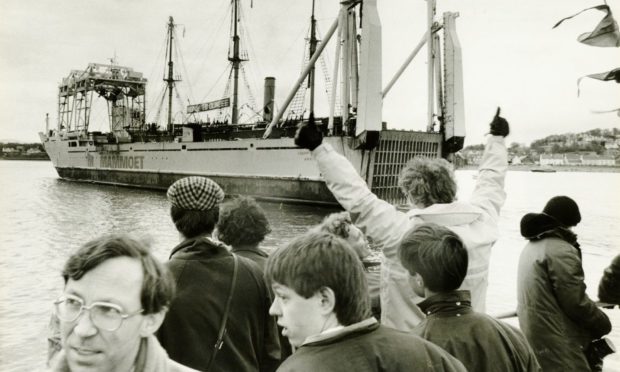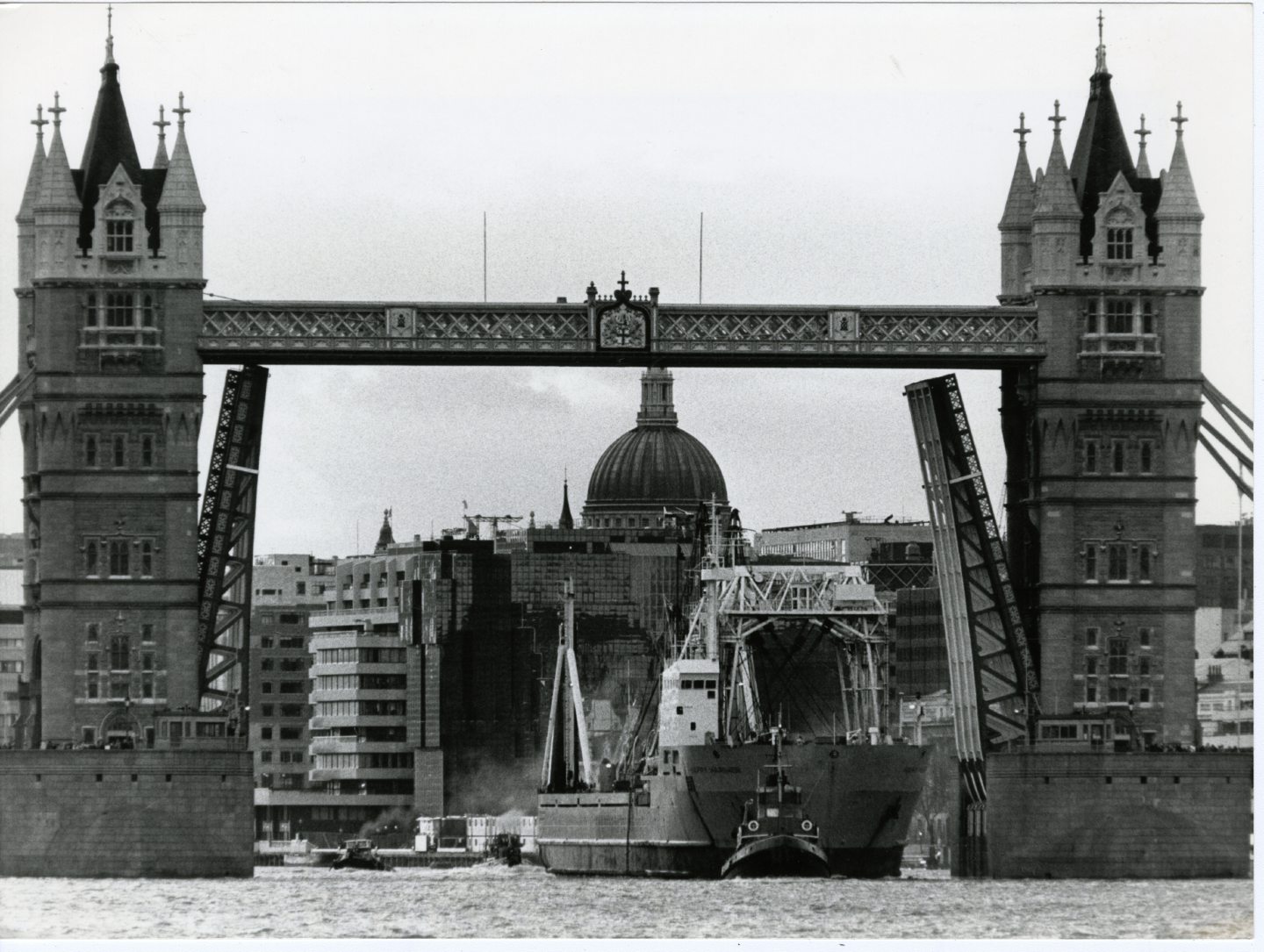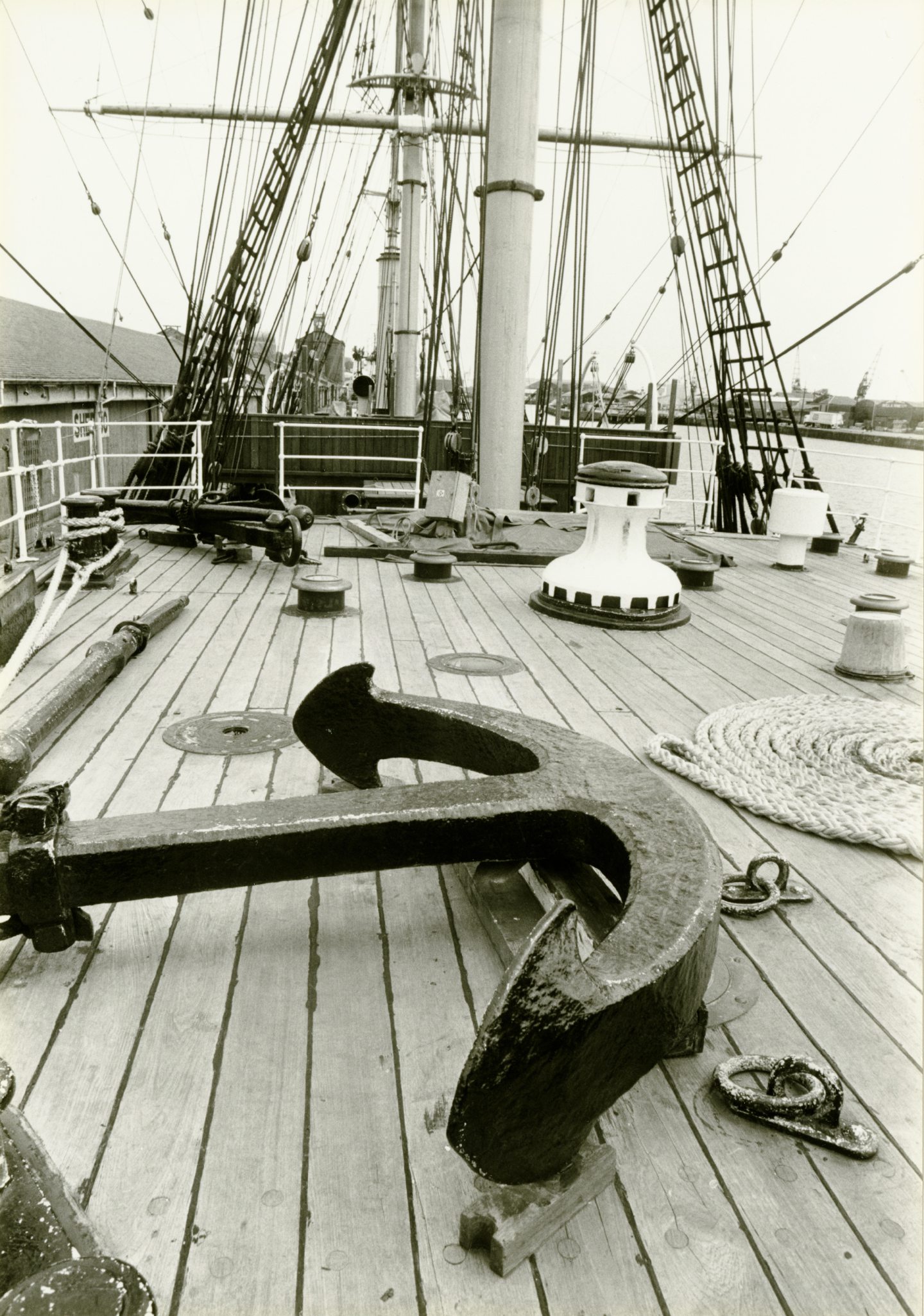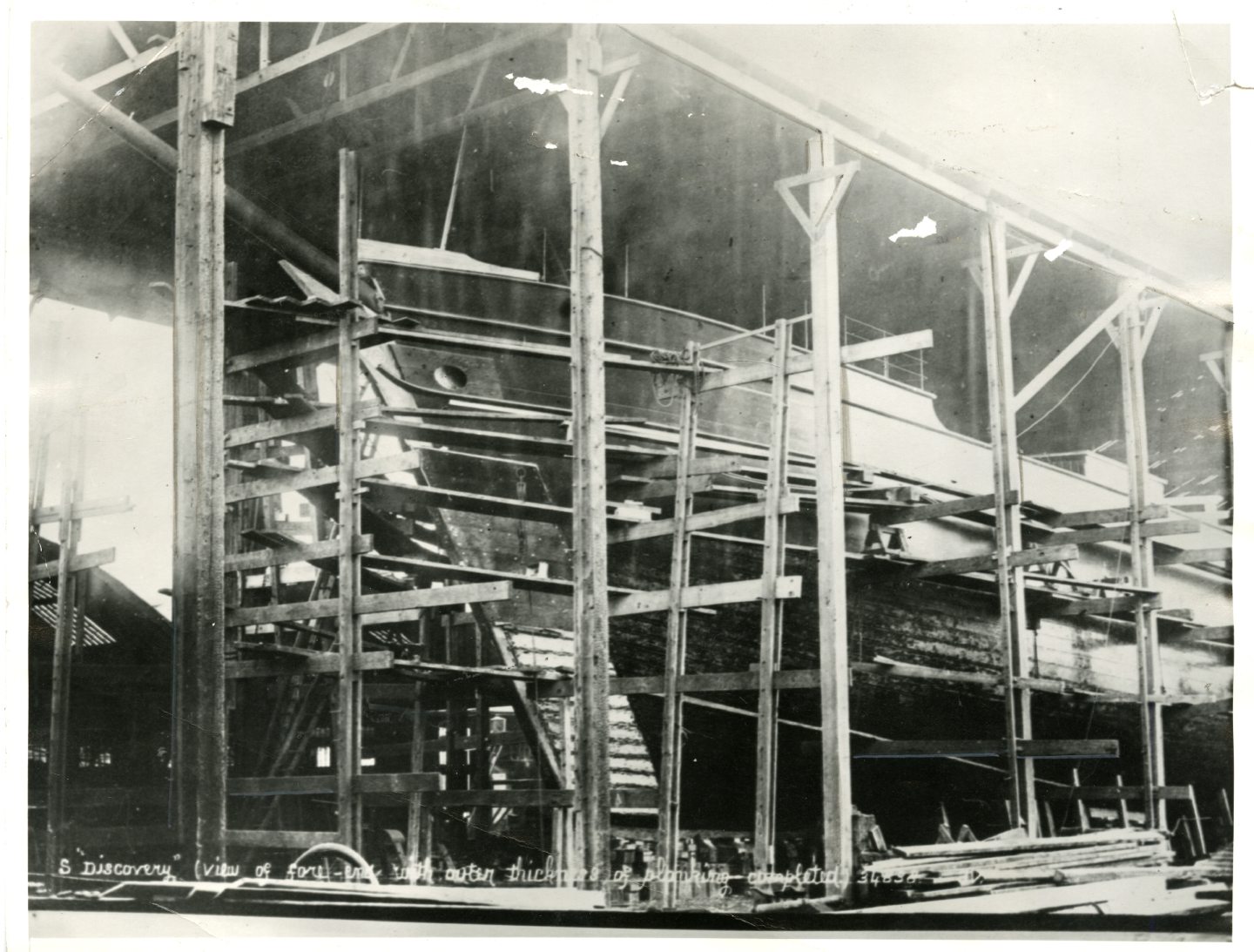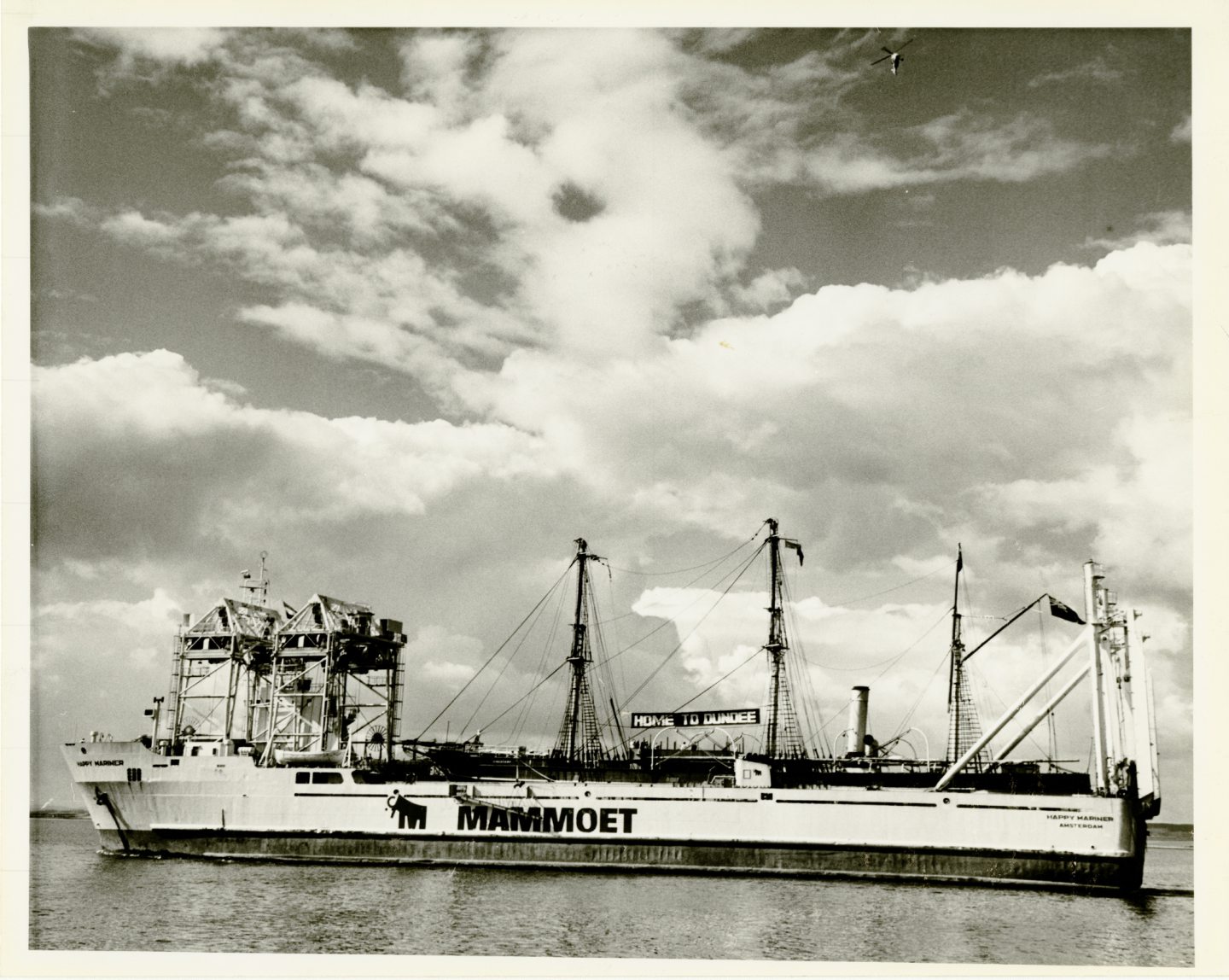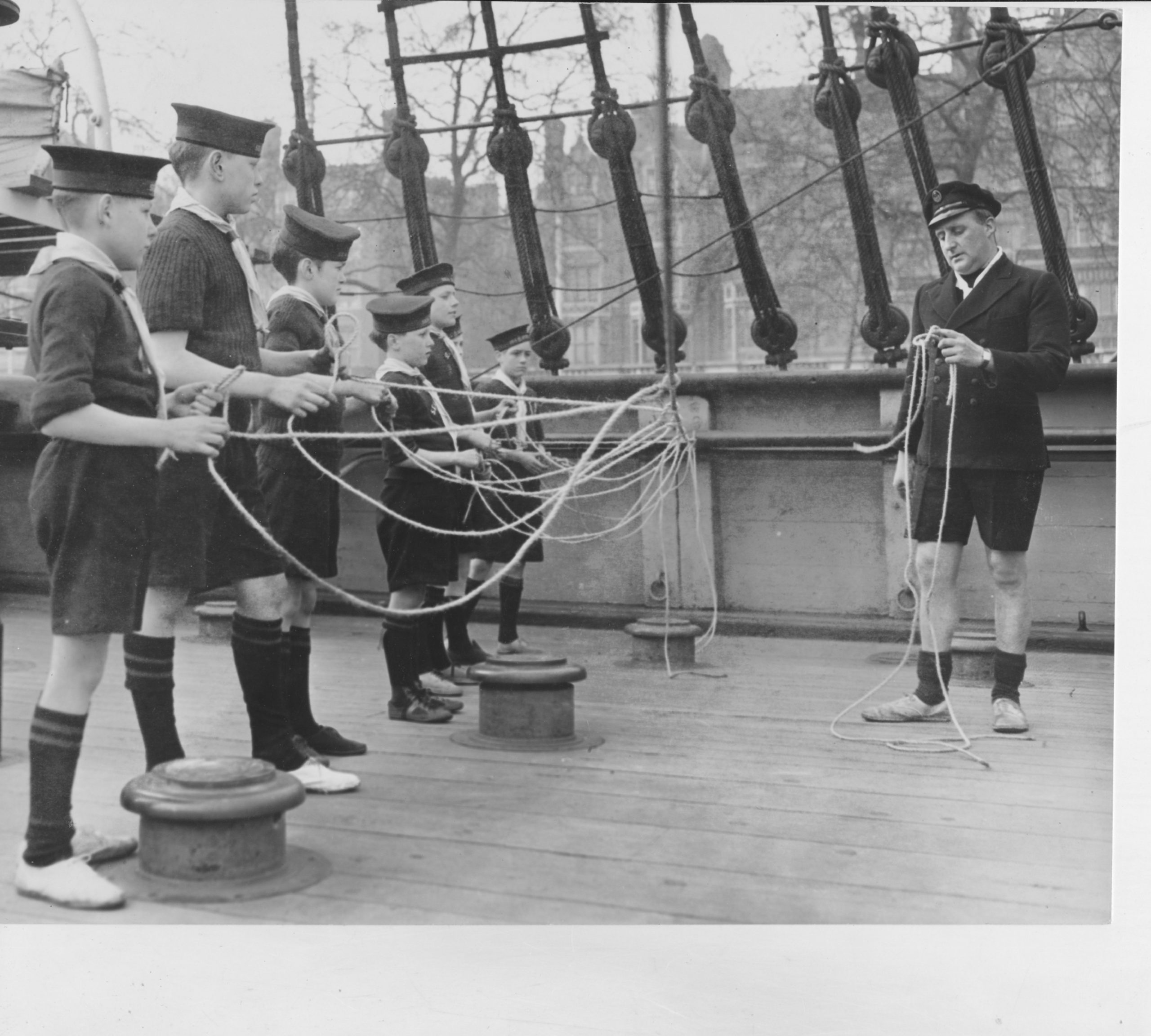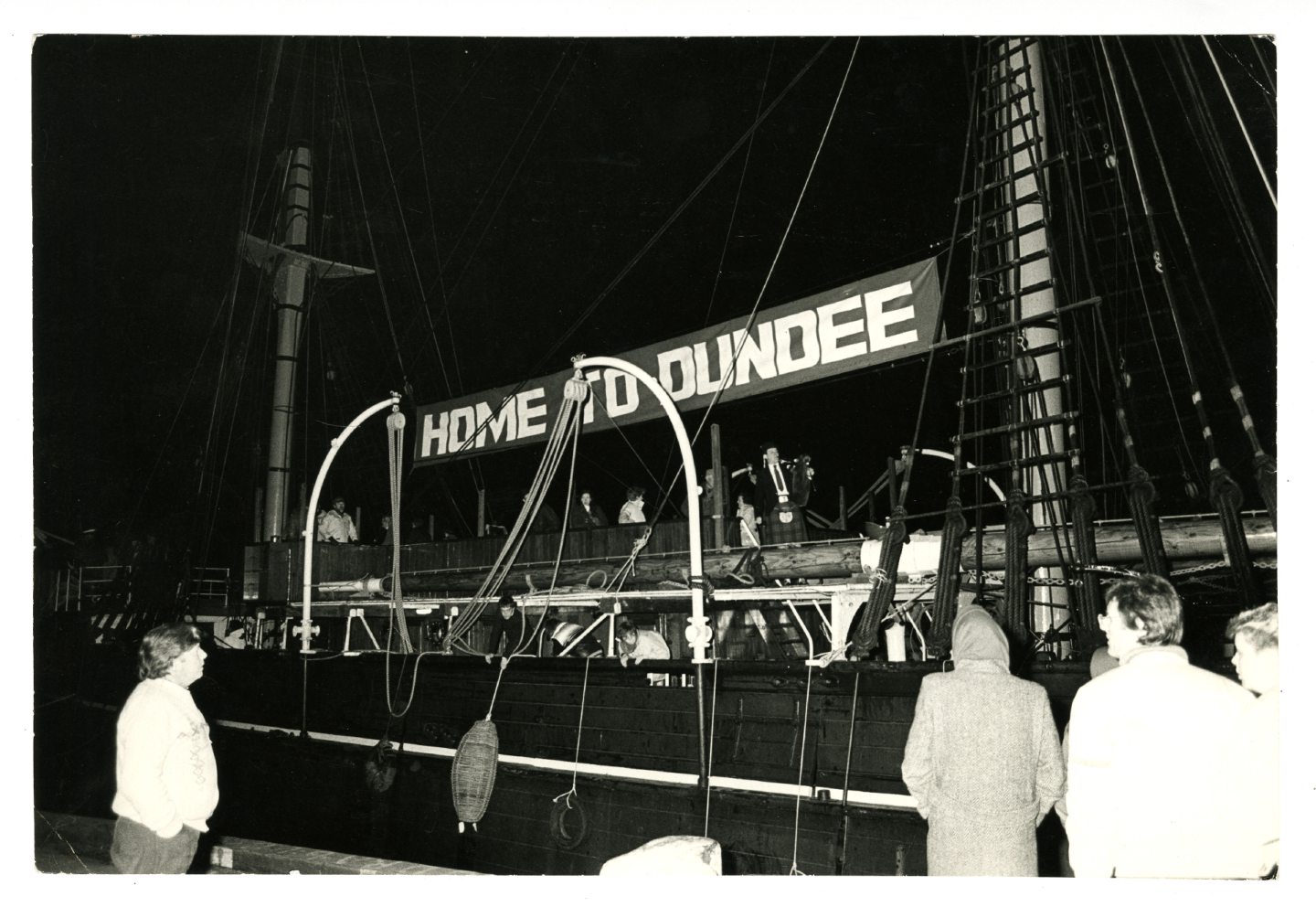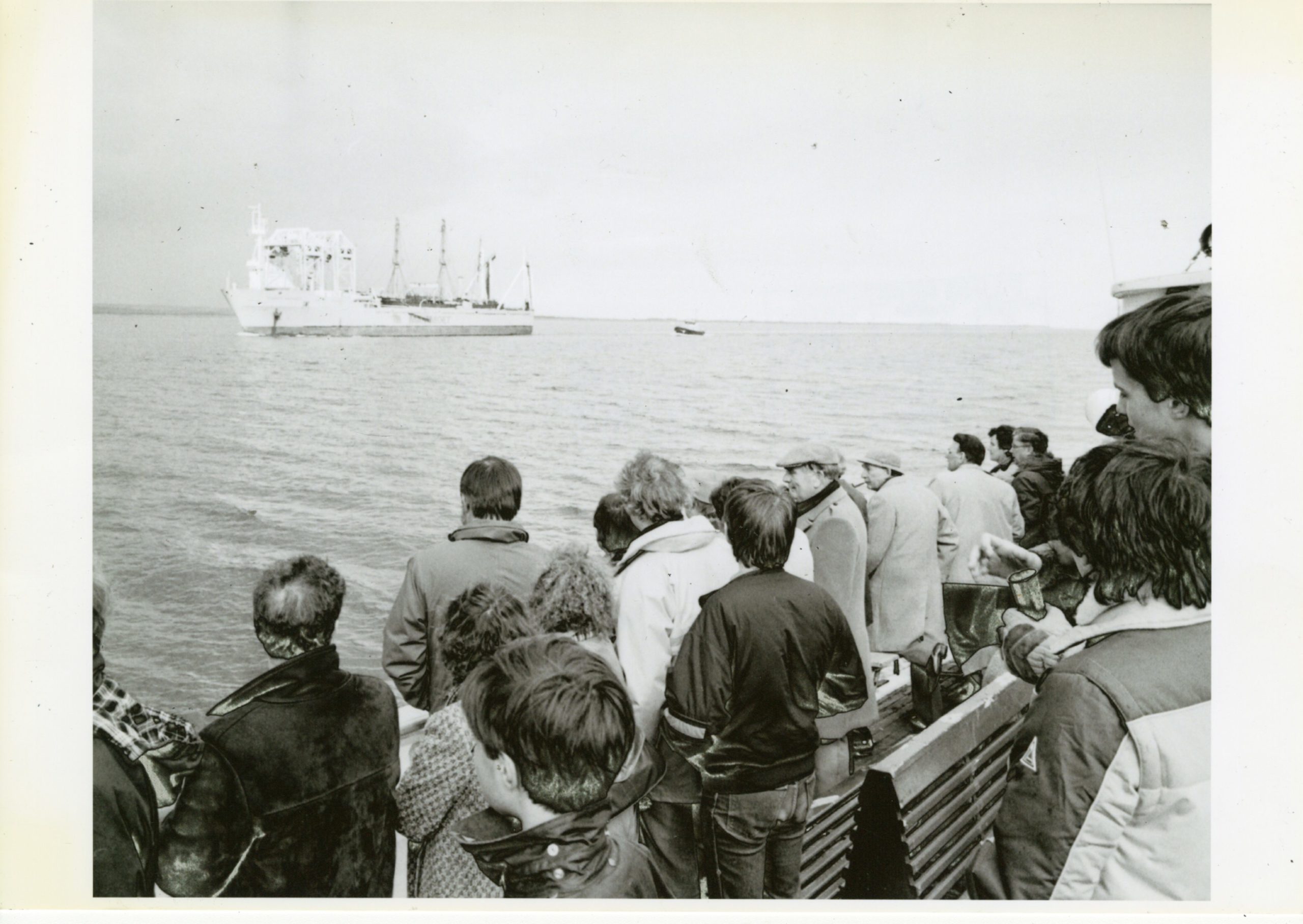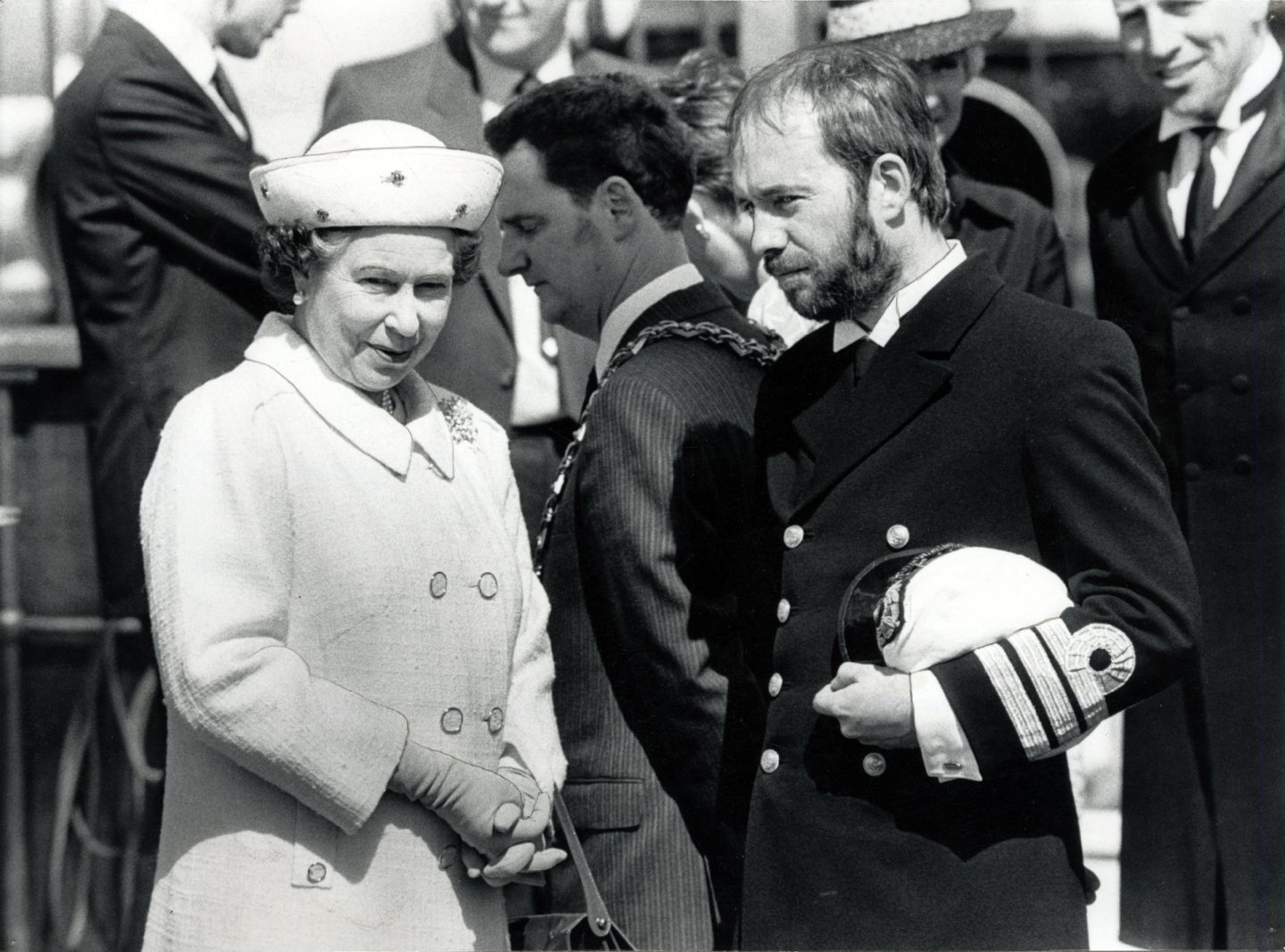As the RRS Discovery made its way up the River Tay aboard The Happy Mariner transporter 35 years ago, thousands of Dundonians flocked to the banks to watch a rich piece of the city’s history return home.
She was the first purpose built scientific research vessel for the Polar Region, transporting Captain Scott and his team to Antarctica at a time when less was known about the icy continent than we now know about Mars.
After 85 years spent away from Dundee the RRS Discovery began her latest voyage from London’s St Katharine’s Dock on March 27 1986, finally arriving at her new berth at Victoria Dock on April 2.
Discovery the first ship of its kind
Sir Clements Robert Markham was a naval officer and geographer who had become obsessed with the idea of a British National Antarctic Expedition in the late 1890s. So much so that he was able to persuade the Royal Geographical Society, of which he was president of, and the Royal Society to start working towards an Antarctic Expedition.
Eventually the government agreed to match any funding raised by the Societies and Markham was able to begin the process of creating the first scientific research vessel of its kind.
With Dundee’s shipyards having longstanding experience of constructing vessels strong enough to withstand the freezing and harsh elements of the Arctic due to being a major whaling centre, the yards were top picks to help bring Markham’s vision to life.
In January 1900 Dundee Shipbuilders Ltd at Panmure were contracted to build Discovery at a cost of £51,000, over £6.1 million today.
While the design was based on the whaling vessels of the time there were still a number of modifications to be made to ensure its ability to undertake the research required.
Magnetic surveys were outlined as an important part of the scientific work of the expedition so the builders had to create an exclusion zone round the magnetic observatory to be sure of complete accuracy, with no iron or steel allowed within 30 feet of the area.
The Discovery was ready for launch on March 21 1901.
Many workers in Dundee were given time off to line the banks of the River Tay awaiting the 3.15pm launch with Markham’s wife, Lady Markham given the task of blessing the ship.
In August of the same year the Discovery would leave her moorings at Cowes, on the Isle of Wight, to begin her Antarctic journey.
Captain Scott and the British National Antarctic Expedition
Captain Robert Falcon Scott was born in Devonport in 1868 and at the age of 13 he began his naval career as a cadet.
With his experience under sail and the knowledge he gained about surveying, electricity and magnetism as a Torpedo lieutenant, Scott had gathered the attention of Markham as the crew was assembled for the Discovery’s maiden expedition and Scott was appointed captain in June 1900 at the age of just 33.
To join him on the journey Scott handpicked 48 men who started the expedition with roles varying from scientists to merchant and naval seamen.
After five months at sea, Antarctica was sighted on January 8 1902. The main purpose of the expedition was scientific – to make magnetic surveys and carry out meteorological, oceanographic, geological and biological research.
During the expedition the Discovery would spend two years locked into the ice, at one stage being over 20 miles from open water.
The research would be a great success with Scott’s western journey which led to the discovery of the Polar Plateau, the exploration of King Edward VII land and the discovery of the first Emperor penguin colony being notable highlights.
While none of the adventurers would reach the South Pole, Captain Scott, alongside senior crewmembers Ernest Shackleton and Edward Wilson, managed to travel further south than anybody before them.
Their mission south began on November 2 1902 with the men arriving back at Discovery on February 3 1903 against all odds. The gents had travelled over 950 miles in the 93 days they were away.
Coming to the end of their expedition the crew planned their return home but by December 1903 there was 20 miles of ice between Discovery and the nearest open sea.
On January 4 1904 relief ships, Morning and Terra Nova, arrived and finally, on February 16 controlled explosions were used, blowing Discovery free and the expedition headed for home.
Discovery arrived at Spithead on September 10 1904 and Scott was acclaimed as a national hero being awarded numerous honours.
Life for Discovery after the voyage
In 1905 following financial problems Discovery was sold to the Hudson’s Bay Company in Canada, where she became a transatlantic cargo vessel. Discovery saw service in the First World War transporting munitions to Russia before returning to research work in 1923.
Discovery returned to Antarctica on a further two occasions after being designated as an RRS. She first transported crews on the British Oceanographic Expedition from 1925 to 1927 and then the British, Australian and New Zealand Antarctic Research Expedition or ‘BANZARE’ from 1929 to 1931 with the ship equipped with a two seater airplane for her final Antarctic journey.
Discovery was then in 1936, docked in London becoming a training vessel for the Scouts and Navy with her engines and boilers removed as scrap to help the war effort.
With her condition deteriorating The Maritime Trust stepped in to save her from being scrapped in 1979, investing £500,000 into her restoration.
She spent time berthed on the River Thames, eventually reverting to the RRS designation and opening as a museum.
By 1986 a plan was in place to get Discovery back to her home city with Dundee Heritage Trust paying just £1 to buy the ship from The Maritime Trust, however, the low buying price was an indication of the continual maintenance and preservation projects that have followed costing millions.
Crowds line banks of the Tay to greet RRS Discovery
On the afternoon of April 2 1986, thousands of onlookers old and young were awaiting the arrival of the legendary ship.
Discovery had boarded semi-submersible ship, The Happy Mariner, in London a few days prior with the cargo vessel carrying the Antarctic explorer up the North Sea towards the River Tay.
Front pages at the time spoke of the “emotional and noisy welcome” the ship received with traffic chaos in full swing as everyone scrambled to catch a glimpse after Discovery’s 85 year absence.
The Evening Telegraph’s front page read: “By 2.30pm what had been a mere speck on the horizon gradually grew larger as a murmur of excitement spread amongst the crowds.
“In Broughty Ferry, traffic along the front came to a complete and chaotic standstill. The sight of the Discovery raised cheers amongst the ranks of sightseers and picnickers who had been camped out on the beach for several hours eager to make this historic moment a gala occasion.”
“It was an amazing thing to experience”
One local who got a rarer view of the ship’s return than most though was well-known radio DJ Ally Bally who was broadcasting live on Radio Tay – from the River Tay.
Remembering one of his career highlights Ally said: “There was a wee boat that was going out to meet the Discovery, supposedly at the mouth of the Tay which was expected to be about an hour out.
“It had the Lord Provost and various other dignitaries on it as well as reporters so I was invited to join the boat.
“We thought well its only an hour out we will broadcast the lunchtime show live from the boat until about 2pm – it ended up being further out than we thought and I was on air from midday until 7pm that night.
“But it was an amazing, amazing thing to do. As we were coming up the Tay everyone was listening to Radio Tay in their cars so I said “right if you are listening on the banks of Fife or the banks of Broughty Ferry all the cars flash your headlights” and there we were on the boat watching all these headlights flashing as we passed.
“It was an amazing sight to see and one that will be with me forever.”
The Discovery in Dundee after 35 years
Now the ship is docked at its new home at Discovery Point with restorations being undertaken over the years allowing generations of Dundonians and tourists the chance to hop aboard and learn about her Antarctic experiences.
Guests have ranged from royal visitors such as The Queen and the Duke and Duchess of Cambridge and it has even starred in its very own Channel 5 documentary.
